
Hard to believe anyone would actually need to be told that those are gumballs, isn’t it? They are the epitome of the breed: large, spherical, colorful, and — dare I say it? — potentially jawbreaking. Yet clearly, at some point in the probably not-too-distant past, some passing myopic soul must have asked the proprietor, “So are those gumballs?”
I suspect that s/he just got tired of answering the same question 4200 times per week. Those of us who work with manuscripts for a living can sympathize.
Just to breathe the word editor (or my preferred title, book doctor) anywhere near the pronoun I and the verb am is to invite an avalanche of questions about manuscripts: how to get them published, how to get them under the eyes of an agent, how to keep them from getting rejected, and, surprisingly often, what they should look like.
Frankly, there seems to be a lot of confusion out there on that last subject — and that puzzles the pros, because standard format for manuscripts actually hasn’t changed all that much over the last 50 years. Oh, underlining is out and italics are in to designate words in foreign languages (currently, one should never underline anything in a book manuscript; I’ll be getting to that), and how one does indentation has altered a bit with the adoption of Microsoft Word as the industry standard for electronic submission (Word measures its tabs in fractions of an inch, not character spaces), but overall, the professionally-formatted manuscripts of today quite closely resemble the professionally-formatted manuscripts of, say, 1958.
That’s not to say, of course — or is it really that self-evident? — that all writing should be, or ever was, formatted in this manner. Short story format is different from standard format for books and book proposals, and has been for quite some time. So are essay format, academic format, journalistic format, and even how a published book will look on a page.
Which is, I suspect, the source of most of the confusion amongst aspiring writers of books. A tremendous amount of the formatting advice out there doesn’t seem to make the distinction between submitting writing to an agent or editor at a publishing house and submitting it to a magazine that prints short stories — or, indeed, presenting it in any context. That small omission leads many, many aspiring writers down the proverbial primrose path, because the fact is, the rules are different for different types of writing.
Do all of those eyebrows currently slapping into hairlines mean that this comes as a surprise to some of you? Were you under the impression that all writing should be formatted identically for submission anywhere, anytime?
If so, you are most emphatically not alone, especially since the rise of Google. Now, it’s far from uncommon for aspiring writers to plug manuscript page, submission format, or some similarly descriptive term into a search engine and come up with 25,000 pages, 65% of which will claim (or at least imply by omission) that they are stating the presentation rules for all professional writing.
Except they’re not. How do I know? Because it’s empirically impossible.
“But Anne,” some of you ask, cradling your sore brows, “why should that be the case? There are plenty of authors who write both short stories and novels, or essays and nonfiction books. Wouldn’t it just make sense that everybody would use the same format for writing?”
That would make sense, if (a) the overall system had been set up by writers, not publishers, (b) there had ever been an overall system governing all kinds of writing, and/or (c) the various species of writing were not published by completely distinct sets of people, each of whom have established norms for their own particular branches. Obviously — or is it so obvious? — the people outside an industry do not have the right to set submission standards for the people within it.
Or, to put it another way: just as all writing is not identical, neither is all publishing.
That very notion is making some of you squirm, isn’t it? I’m not entirely surprised: every time I have broached the subject formally, those who have heard rumors elsewhere that something has changed leap upon my well-intentioned little gazelles of advice with the ferocity of hungry lions, demanding that I either recant my not at all heretical beliefs or, as I mentioned last time, to compel literally every other writing advice-giver in North America to agree to abide by precisely the same rules.
To dispel any illusions up front: neither of those things is going to happen during Formatpalooza. In my professional experience, the formatting I’m discussing here is indeed important, and not just in theory. I have sold books adhering to these rules; my editing clients have sold books using them; agents, editors, and contest judges regularly complain about writers who don’t adhere to them — or even know such rules exist. So I feel entirely comfortable in saying early and often that manuscripts presented in standard format look professional to people who handle manuscripts for a living.
Does that mean every professional reader, everywhere, every time, will want to see your work formatted this way? No, of course not: as I also say early and often, should you happen to be submitting to an agent, editor, or contest that specifically asks you to do something other than I advise here, obviously, you should give him, her, or it what he or his stated guidelines request.
That’s just common sense, right? Not to mention basic courtesy. Yet judging by the plethora of questions I’m constantly getting on the subject, it’s not self-evident.
To make this last point pellucidly clear for those of you who have not been hanging around Author! Author! throughout our long autumn of ‘Paloozas: I would actively encourage you not only to check the standard agency guides for expressions of alternate preferences, but also to run an Internet search on any individual agent to whom you were planning to submit, to double-check that s/he hasn’t stated in some public forum that, for instance, s/he prefers only a single space after a period or a colon or can’t stand the sight of Times New Roman instead of Courier. Admittedly, it requires a bit more effort on the submitter’s part, but hey, it’s worth it.
Why? Chant it with me now, ‘Palooza devotees: if an agent or editor has been kind enough to take the time to tell aspiring writers precisely what s/he wants to see, be it in a query letter, storyline, or manuscript submission, a savvy writer should pay attention.
Again, that’s just being both smart and polite, isn’t it? If an agency has been considerate enough of its future clients to post submission guidelines, it’s only courteous to acknowledge their efforts.
I spot some timid hands raised out there. “But Anne,” point out some confused by conflicting advice — and who could blame them, given the multiplicity of it? “I’ve been doing my homework, and the overwhelming majority of the guide listings and agency websites I’ve found don’t talk about manuscript format at all. Does that mean that these fine folks just don’t care about how I present my writing?”
The short answer is no. The long answer is that standard format is just that: standard. So much so that to many folks who read and sell manuscripts for a living, it’s patently self-evident that they expect to see submissions in standard format.
So here is the mid-length answer: in the absence of specific alternate directions, the best course is always to adhere to the rules of standard format.
That’s why I revisit this topic regularly. To repeat the disclaimer I’ve run every single time I’ve run a series on formatting: these are the rules that I use myself, the ones that my lengthy experience tells me work. There are, however, other rules out there, presented by some very credible sources. If you find other guidelines that make sense to you, use them with my good wishes.
Seriously: as far as I’m concerned, what you do with your manuscript up to you. I’m only trying to be helpful here. Personally, I would strenuously advise against implementing any piece of formatting advice that deviates from the strictures of standard format unless you are positive that the specific agent or contest to whom you are planning to submit it wants to see your work that way — all too often, individual agents’ preferences fly around the rumor mill billed as the new universal expectation — but hey, I’m a realist: I’m aware that many, if not most, aspiring writers find it magnificently annoying to learn that they might have to produce more than one version of their manuscripts to submit to agents (or, even more common, writing contests) with different guidelines. They want to format their work once and be done with it, and who can blame them?
While I’m strenuously advising things, I would also urge you never to implement a rule you do not understand. That’s why I provide such extensive explanations for each of my suggested guidelines — so my readers may consider the various recommendations out there and form their own opinions.
You’re smart people; I know you’re up to the challenge.
I’m also confident that my readers are savvy enough to understand that paying attention to how a manuscript looks does not imply that how it is written doesn’t make a difference. Of course, writing talent, style, and originality count. Yet in order to notice any of those, a reader has to approach the page with a willingness to be wowed.
That willingness can wilt rapidly in the face of incorrect formatting — which isn’t, in response to what half of you just thought, necessarily the result of mere market-mindedness on the part of the reader. After you’ve read a few thousand manuscripts, deviations from standard format leap out at you. As will spelling and grammatical errors, phrase repetition, clichés, telling rather than showing, and all of the writing problems we’ve all heard so much.
They’re distractions from your good writing. My goal here is to help you minimize the distractions that would catch Millicent the agency screener’s eye first.
I hear those of you who have spent years slaving over your craft groaning out — believe me, I sympathize. For those of you who have not already started composing your first drafts in standard format (which will save you a lot of time in the long run, incidentally), many of the tiny-but-pervasive changes I am about to suggest that you make to your manuscript are going to be irksome to implement. Reformatting a manuscript is time-consuming and tedious, and I would be the first to admit that at first, some of these rules can seem arbitrary.
At least on their faces. Quite a few of these restrictions remain beloved even in the age of electronic submissions because they render a manuscript a heck of a lot easier to edit — and to read, in either hard or soft copy. As I will demonstrate with abundant examples later in this series, a lot of these rules exist for completely practical purposes — designed, for instance, to maximize white space in which the editor may scrawl trenchant comments like, “Wait, wasn’t the protagonist’s brother named James in the last chapter? Why is he Aloysius here?”
Perhaps this is self-evident from what I have already said, but here’s one last, quick caveat before I launch back into the list: the standard format restrictions I’m listing here are not intended to be applied to short stories, poetry, journalistic articles, academic articles, or indeed any other form of writing. The guidelines in this series are for BOOK manuscripts and proposals, and thus should not be applied to other kinds of writing. Similarly, the standards applicable to magazine articles, short stories, dissertations, etc. should not be applied to book proposals or manuscripts.
For the guidelines for these, you may — and should — seek elsewhere. (See my earlier rejection of universality.)
Everyone clear on that and ready to dive back into the matter at hand? Excellent; help yourself to a gumball. Let’s recap the rules we covered last time:
(1) All manuscripts should be printed or typed in black ink and double-spaced, with one-inch margins around all edges of the page, on 20-lb or better white paper.
(2) All manuscripts should be printed on ONE side of the page and unbound in any way.
(3) The text should be left-justified, NOT block-justified. By definition, manuscripts should NOT resemble published books in this respect.
(4) The preferred typefaces are 12-point Times, Times New Roman, Courier, or Courier New — unless you’re writing screenplays, in which case you may only use Courier. For book manuscripts, pick one (and ONLY one) and use it consistently throughout your entire submission packet.
Is everyone happy with those? PLEASE pipe up with questions, if not. In the meantime, let’s move on.
(5) The ENTIRE manuscript should be in the same font and size. Industry standard is 12-point.
No exceptions, please. No matter how cool your desired typeface looks, or how great the title page looks with 14-point type.
Yes, even on the title page, where almost everyone gets a little wacky the first time out. No pictures or symbols here, either, please. Just the facts. (If you don’t know how to format a title page professionally — and yes, Virginia, there is a professional format for it — please see the TITLE PAGE category on the list at right.)
I hate to be the one to break it to you, but there’s a term for title pages with 24-point fonts, fancy typefaces, and illustrations.
It’s high school book report. Need I say more?
(6) Do not use boldface anywhere in the manuscript BUT on the title page — and not even there, it’s not mandatory.
This seems like an odd one, right? Actually, the no-bolding rule is a throwback to the old typewriter days, where only very fancy machines indeed could darken selected type. So historically, using bold in-text is considered a bit tacky for the same reason that wearing white shoes before Memorial Day is in certain circles: it’s a subtle display of wealth.
You didn’t think all of those white shoes the Victorians wore cleaned themselves, did you? Shiny white shoes equaled scads of busily-polishing servants.
You may place your title in boldface on the title page, if you like, but that’s it. Nothing else in the manuscript should be bolded. (Unless it’s a section heading in a nonfiction proposal or manuscript — but don’t worry about that for now; I’ll be showing you how to format both a book proposal and a section break later on in this series, I promise.)
(7) Every page in the manuscript should be numbered — except the title page.
I’m quite serious about this: even if you take no other advice from Formatpalooza, please remember to number your pages.
This may seem like a little thing, but you’d be surprised how often violating this rule results in instantaneous rejection. Few non-felonious offenses irk the professional manuscript reader (including yours truly, if I’m honest about it) more than an unnumbered submission or contest entry. It ranks right up there on their rudeness scale with assault, arson, and beginning a query letter with, Dear Agent.
Why? Gravity, my friends, gravity. What goes up tends to come down — and if the object in question happens to be an unbound stack of paper…
Did that seem like an abstract metaphor? Not at all. Picture, if you will, two manuscript-bearing interns walking toward each other in an agency hallway. Between them, a banana peel. What is going to happen when the first slips, and the second tumbles on top of him, screaming?
You may giggle, but anyone who has ever worked with submissions has first-hand experience of this (okay, perhaps not the part about the banana peel, as well as what comes next: after the blizzard of flying papers dies down, and the two combatants rehash that old Reese’s Peanut Butter Cup commercial’s dialogue (“You got romance novel in my literary fiction!” “You got literary fiction in my romance novel!”), what needs to happen?
Yup. Some luckless soul has to put all of those pages back in the proper order. Put yourself in Millicent’s moccasins for a moment: just how much more irksome is that task going to be if the pages are not numbered?
Number your pages. Trust me, it is far, far, FAR easier for Millicent to toss the entire thing into the reject pile than to spend the hours required to guess which bite-sized piece of storyline belongs before which in an unnumbered manuscript.
FYI, the first page of the text proper is page 1 of the text, not the title page, and should be numbered as such. If your opus has an introduction or preface, the first page of that is page 1, not the first page of chapter 1.
Why, you ask? Long-time readers, pull out your hymnals and sing along: BECAUSE A MANUSCRIPT SHOULD NOT LOOK IDENTICAL TO A PUBLISHED BOOK.
The title page is not the only one commonly mislabeled as page one, by the way: epigraphs — those quotations from other authors’ books so dear to the hearts of writers everywhere — should not appear on their own page in a manuscript, as they sometimes do in published books. If you feel you must include one (considering that 99.9999% of the time, Millicent will just skip over it), include it between the chapter title and text on page 1.
If that last paragraph left your head in a whirl, don’t worry — I’ll show you how to format epigraphs properly later in this series. (Yes, including some discussion of that cryptic comment about Millicent. All in the fullness of time, my friends.)
(8) Each page of the manuscript (other than the title page) should have a standard slug line in the header. The page number should appear in the slug line, not anywhere else on the page.
Including the slug line means that every page of the manuscript has the author’s name on it — a great idea, should you, say, want an agent or editor to be able to contact you after s/he’s fallen in love with it. The slug line should appear in the upper left-hand margin (although no one will sue you if you put it in the upper right-hand margin, left is the time-honored location) of every page of the text except the title page (which should have nothing in the header or footer at all).
A trifle confused by all that terminology? I’m not entirely surprised. Most writing handbooks and courses tend to be a trifle vague about this particular requirement, so allow me to define the relevant terms: a well-constructed slug line includes the author’s last name, book title, and page number, to deal with that intern-collision problem I mentioned earlier. (The slug line allows the aforementioned luckless individual to tell the romance novel from the literary fiction.) And the header, for those of you who have not yet surrendered to Microsoft Word’s lexicon, is the 1-inch margin at the top of each page.
Traditionally, the slug line appears all in capital letters, but it’s not strictly necessary; if the agent of your dreams has a preference on the matter, trust me, you’ll be the first to hear about it after she signs you. Personally, I find the all-caps format visually distracting, so the third page of my memoir has a slug line that looks like this:
Mini/A Family Darkly/3
Since the only place a page number should appear on a page of text is in the slug line, if you are in the habit of placing numbers wacky places like the middle of the footer, do be aware that it does not look strictly professional to, well, professionals. Double-check that your word processing program is not automatically adding extraneous page markers.
Do not, I beg of you, yield like so many aspiring writers to the insidious temptation add little stylistic bells and whistles to the slug line, to tart it up. Page numbers should not have dashes on either side of them, be in italics or bold, or be preceded by the word page.
If that admonition strikes you as a disappointing barrier to your self-expression, remember, professional readers do not regard formatting choices as conveyers of personal style. The point here is not to make your slug line stand out for its innovative style, but your writing. In order for that to be possible, your manuscript’s pages to look exactly like every other professional writer’s.
And yes, Virginia, I am going to keep making that point over and over until you are murmuring it in your sleep. Why do you ask?
If you have a subtitle, don’t include it in the slug line — and if you have a very long title, feel free to abbreviate, to keep the slug line from running all the way across the top of the page. The goal here is to identify the manuscript at a glance, not to reproduce the entire book jacket.
Why not? Well, technically, a slug line should be 30 spaces or less, but there’s no need to stress about that in the computer age. (A slug, you see, is the old-fashioned printer’s term for a pre-set chunk of, you guessed it, 30 spaces of type. Aren’t you glad you asked?)
Keep it brief. For instance. my agent is currently circulating a novel of mine entitled THE BUDDHA IN THE HOT TUB — 26 characters, counting spaces. Since my last name is quite short, I could get away with putting it all in the slug line, to look like this:
Mini/The Buddha in the Hot Tub/1
If, however, my last name were something more complicated, such as Montenegro-Copperfield — 22 characters all by itself, including dash — I might well feel compelled to abbreviate. Just for the sake of variety, let’s see it in all caps:
MONTENEGRO-COPPERFIELD/BUDDHA/1
Incidentally, should anyone out there come up with a bright idea for a category heading on the archive list for this issue other than SLUG LINE — a category that already exists, but is unlikely to be found by anyone not already familiar with the term — I’d be delighted to hear suggestions. I’ve called it a slug line ever since I first clapped eyes on a professional manuscript (an event that took place so long ago my response to the sight was not, “What’s that at the top of the page, Daddy?” but “Goo!”), so I’m probably not going to be coming up with a good alternative anytime soon. Thanks.
(9) The first page of each chapter should begin a third of the way down the page, with the chapter title appearing on the first line of the page, not on the line immediately above where the text begins.
That’s fourteen single-spaced lines, incidentally. Don’t panic if you’re having trouble visualizing this — I’ll be giving concrete examples of what the first page of a chapter should look like later in this series.
The chapter title (or merely “Chapter One”) may appear on the first line of the first page — not on the last line before the text, as so many writers mistakenly do. The chapter title or number should be centered, and it should neither be in boldface nor underlined.
Why shouldn’t the title appear immediately above the text, as one so often sees — and, frankly, as some other writing sites advise? Because that’s where the title of a short story lives, not a book’s.
Self-evident now that you’ve heard it, isn’t it?
Because confusing the two formats is so common, very frequently, agents, editors and contest judges are presented with improperly-formatted first pages that include the title of the book, by Author’s Name, and/or the writer’s contact information in the space above the text. This is classic rookie mistake.
To professional eyes, a manuscript that includes any of this information on the first page of the manuscript (other than in the slug line, of course) seems like it just ended up in the wrong office. Clearly, the writer wanted not the agency to which she sent it, but the magazine down the street.
So where does all of that necessary contact information go, you ask? Read on.
(10) Contact information for the author belongs on the title page, not on page 1.
This is one of the most obvious visual differences between a short story submission (say, to a literary journal) and a novel submission. To submit a manuscript — or contest entry, for that matter — with this information on page 1 is roughly the equivalent of taking a great big red marker and scrawling, “I don’t know much about the business of publishing,” across it.
Just don’t do it.
“But wait,” I hear some of you out there murmuring, “I need a title page? Since when?”
Funny you should mention that, because…
(11) Every submission for a book-length work should include a title page, even partial manuscripts.
This one seems to come as a surprise to a lot of aspiring writers. You should always include a title page with ANY submission of ANY length, including contest entries and the chapters you send after the agent has fallen in love with your first 50 pages.
Why, you ask? Because it is genuinely unheard-of for a professional manuscript not to have a title page: literally every manuscript that any agent in North America sends to any editor in hard copy will include one, for the exceedingly simple reason that it’s the page that includes the agent’s contact information.
Yet, astonishingly, a good 95% of writers submitting to agencies seem to be unaware that including it is industry standard. To them, the cover letter, address on the SASE, or the e-mail to which the requested materials were attached are identification enough. But in practice, it’s actually none of those things will necessarily still be attached to your pages at the point when the agent of your dreams says, “By jingo, I’ve read enough. This is a writer I must sign, and pronto!”
Oh, you think that the SASE won’t go flying when those interns collide in the hallway? Or that e-mails never get deleted accidentally?
On the bright side, the widespread ignorance that a title page is expected means that if you are industry-savvy enough to include a professionally-formatted title page with your work, your submission automatically looks like a top percentile ranker to professional eyes from the moment it’s pulled out of the envelope. It’s never too early to make a good first impression, right?
If you do not know how to format a proper title page — and yes, Virginia, there is a special format for it, too — please see the TITLE PAGE category at right. Or wait a few days until I cover it later in this series.
Again, it’s entirely up to you. No pressure here. Have a gumball while you wait.
Before anyone who currently has a submission languishing at an agency begins to panic: you’re almost certainly not going to get rejected solely for forgetting to include a title page. Omitting a title page is too common a gaffe to be an automatic deal-breaker for most Millicents. Ditto with improperly-formatted ones. And yes, one does occasionally run into an agent at a conference or one blogging online who says she doesn’t care one way or the other about whether a submission has a title page resting on top at all.
Bully for them for being so open-minded, but as I point out roughly 127,348 times per year in this forum, how can you be sure that the person deciding whether to pass your submission upstairs or reject it isn’t a stickler for professionalism?
I sense some shoulders sagging at the very notion of all the work it’s going to be to alter your pages before you send them out. Please believe me when I tell you that, as tedious as it is to change these things in your manuscript now, by the time you’re on your third or fourth book, it will be second nature to you.
Why, I’ll bet that the next time you sit down to begin a new writing project, you will automatically format it correctly. Think of all of the time that will save you down the line.
Hey, in this business, you learn to take joy in the small victories.
More guidelines follow in the next couple of posts — yes, those of you whose hearts just sank audibly, standard format does indeed have that many rules — and then we shall move on swiftly to concrete examples of what all of this formatting looks like in practice. Why go over this in such detail? Because, again, I’m not asking you to embrace these guidelines just because I say so.
You should never do that, no matter how credible the source urging you to implement a rule that is new to you. I want you to have enough information on the subject to be able to understand why following them might be a good idea.
I’m funny that way. Keep up the good work!




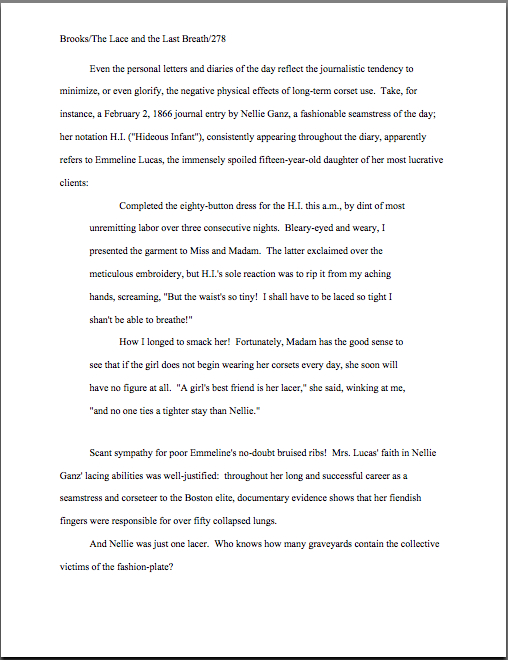
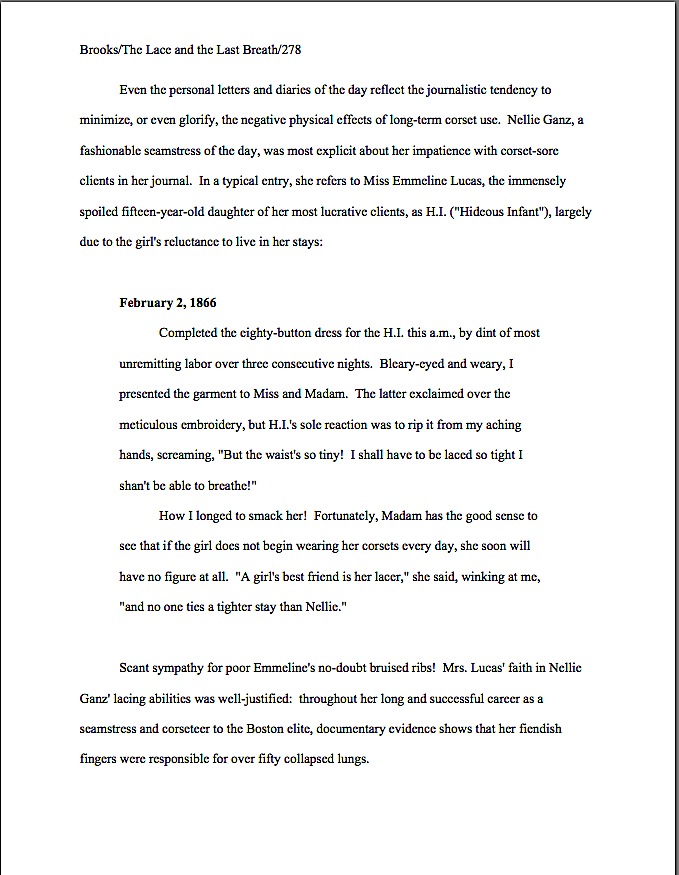
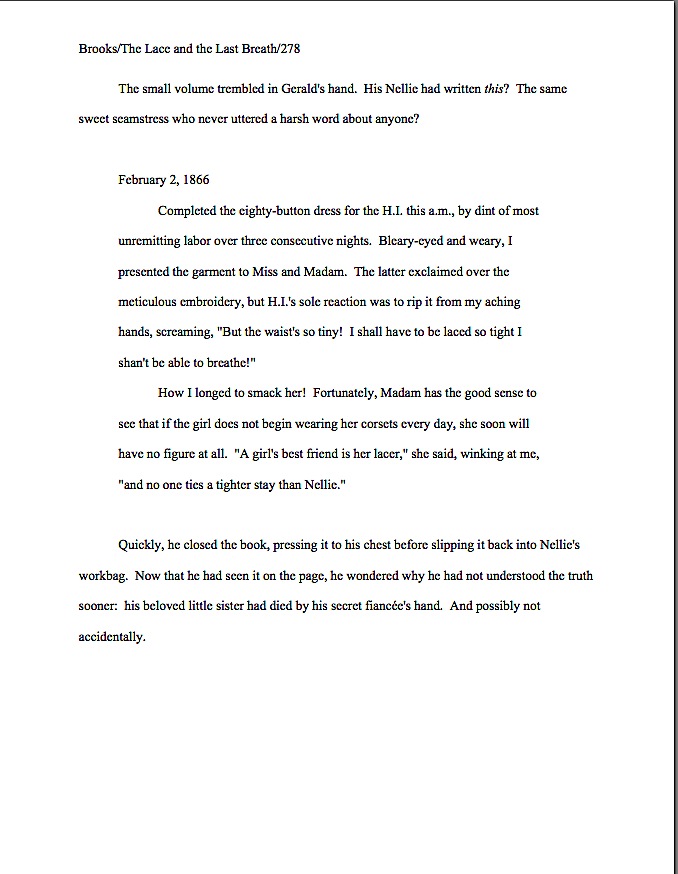
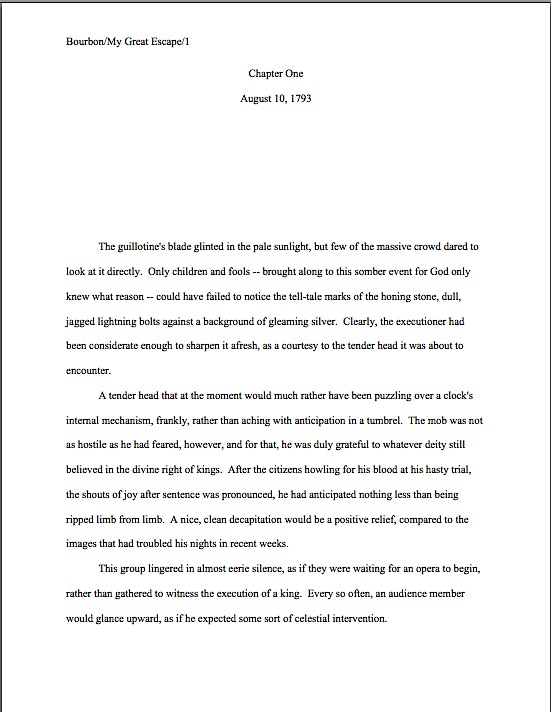
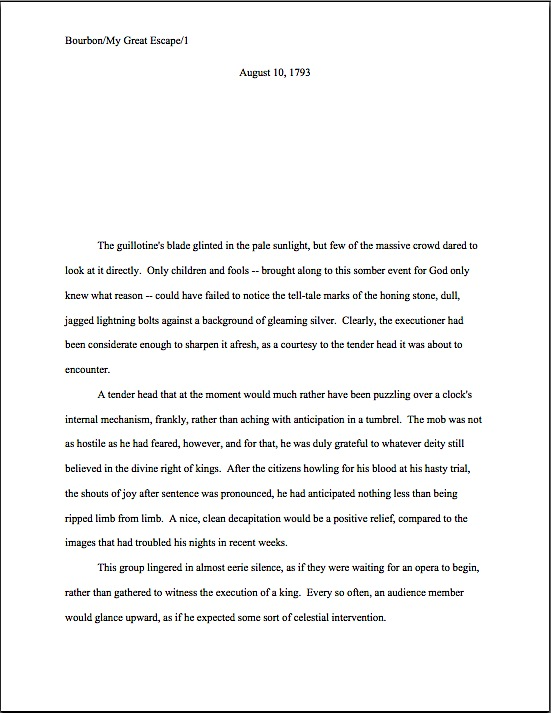



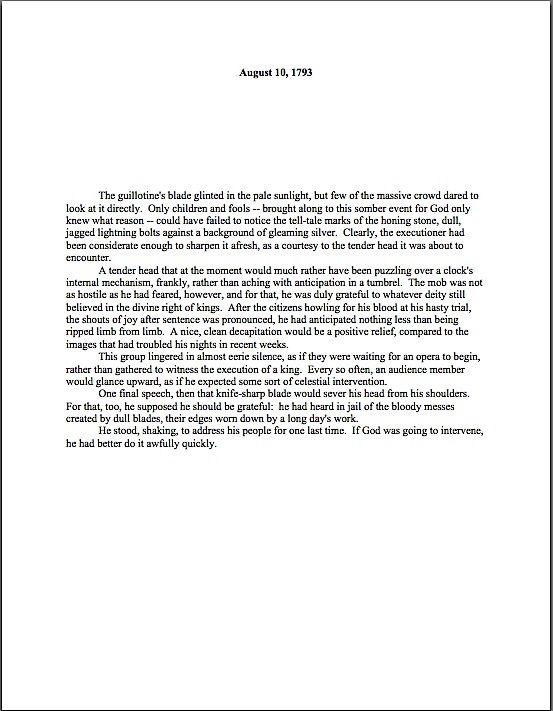
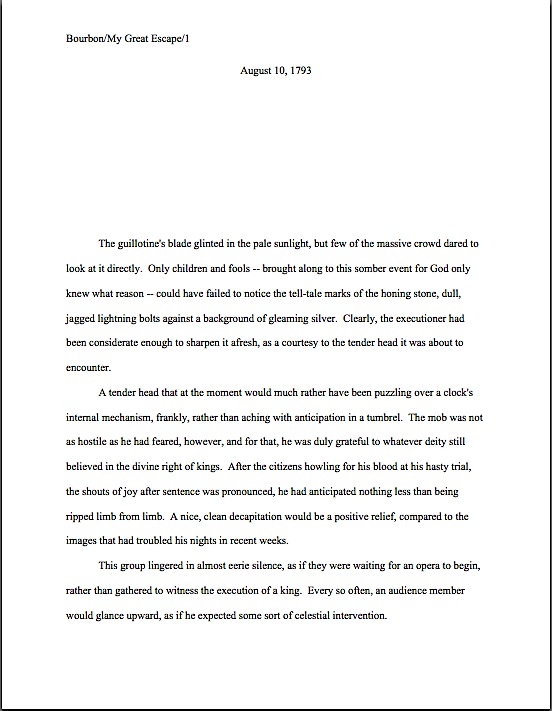



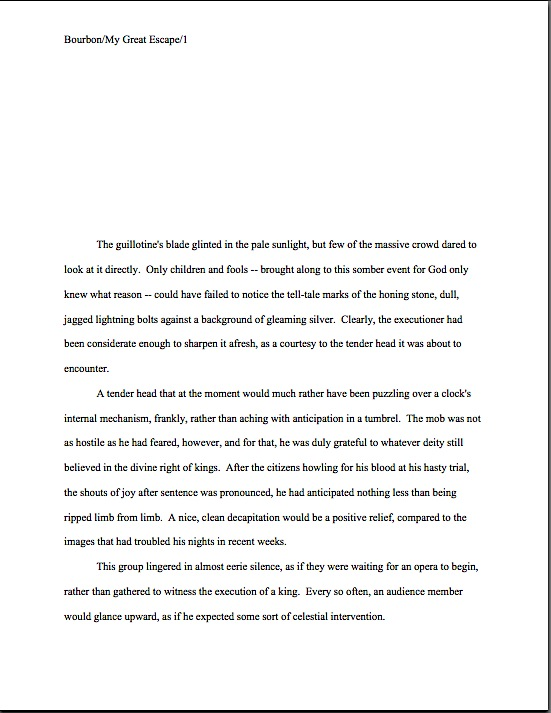

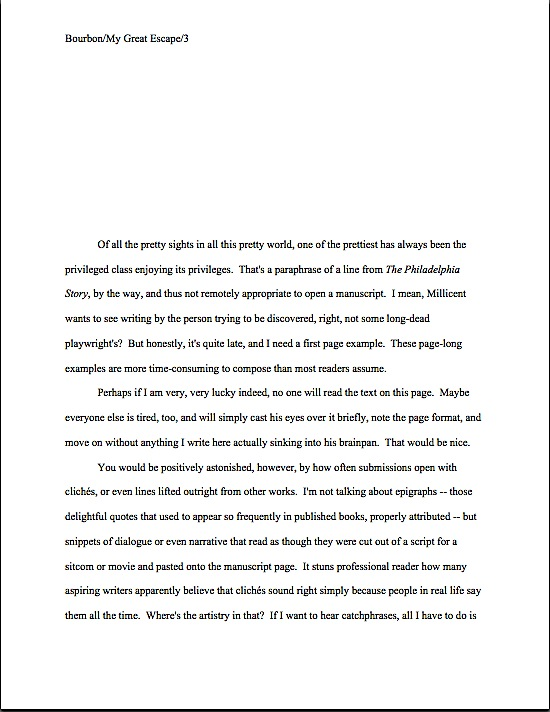

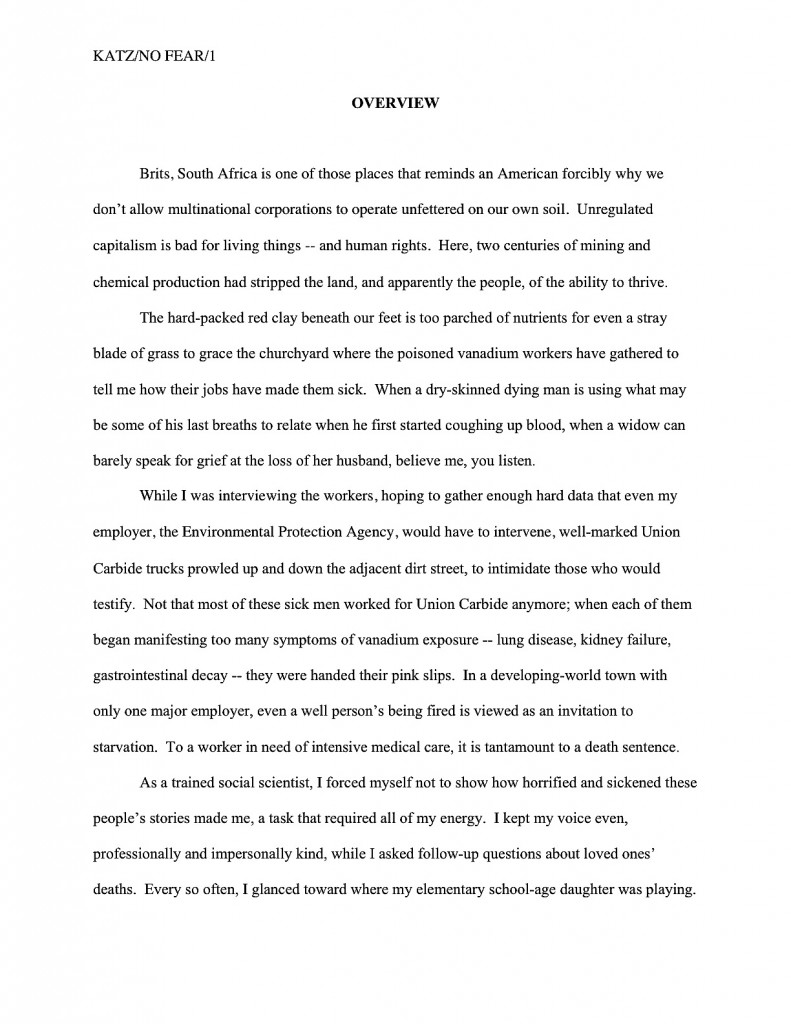

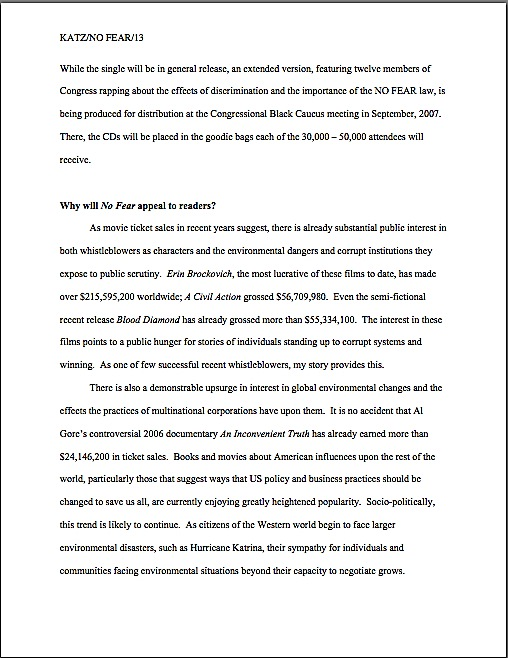
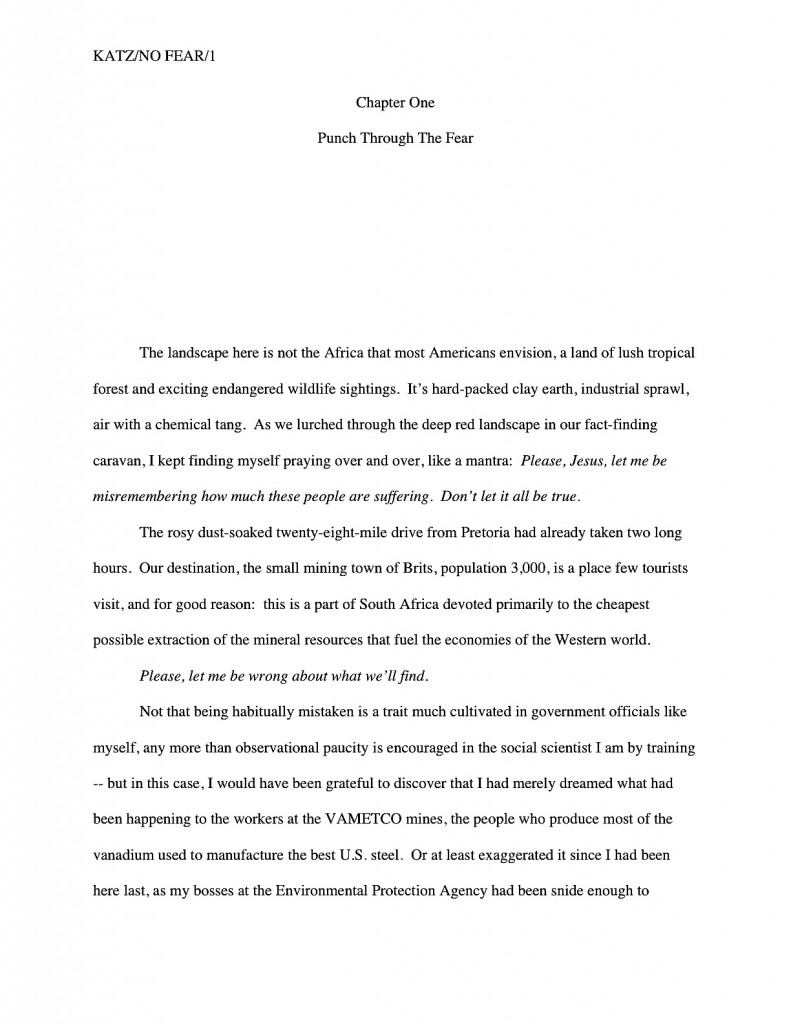
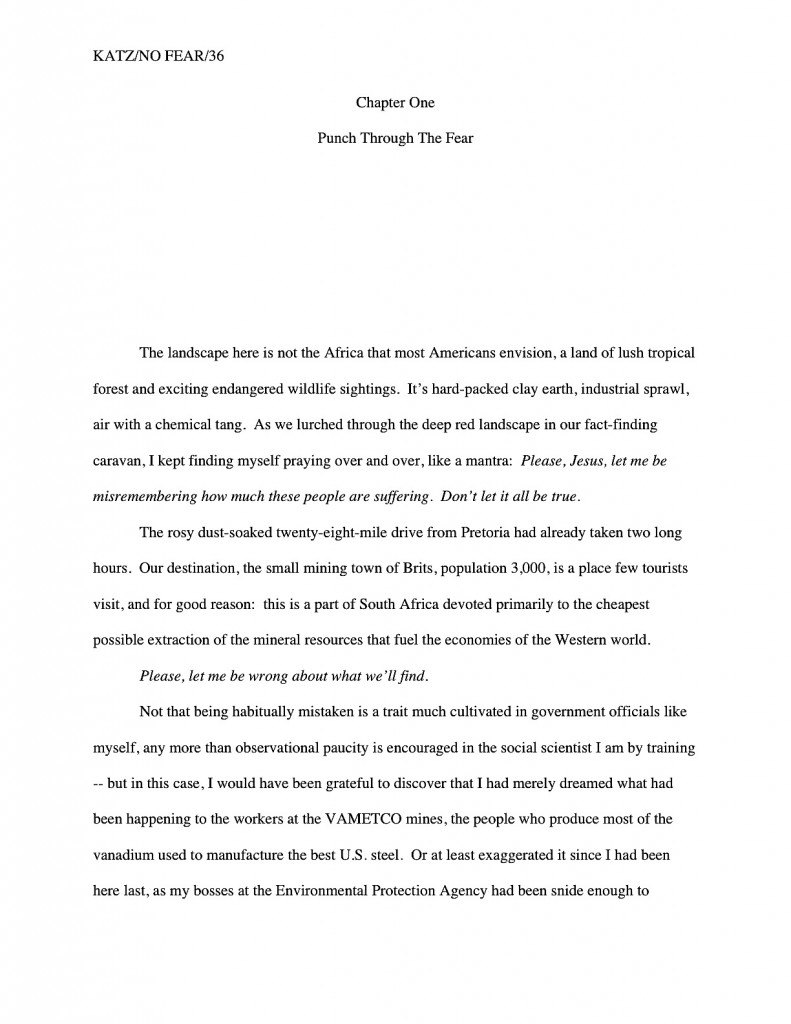
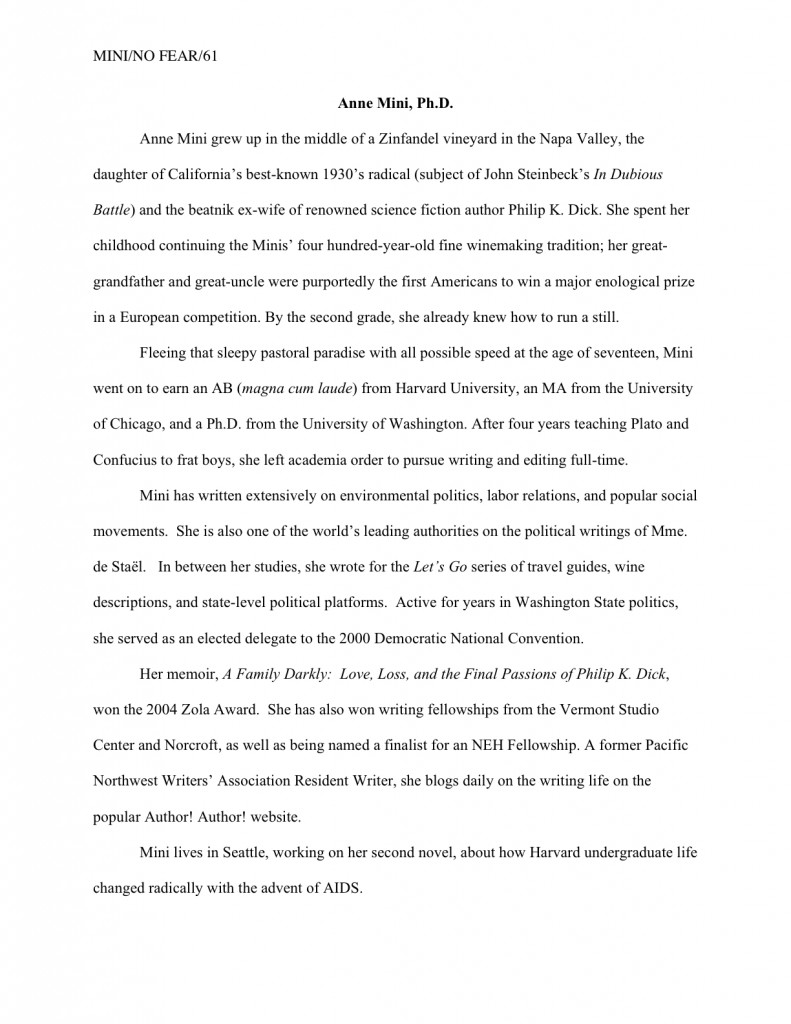
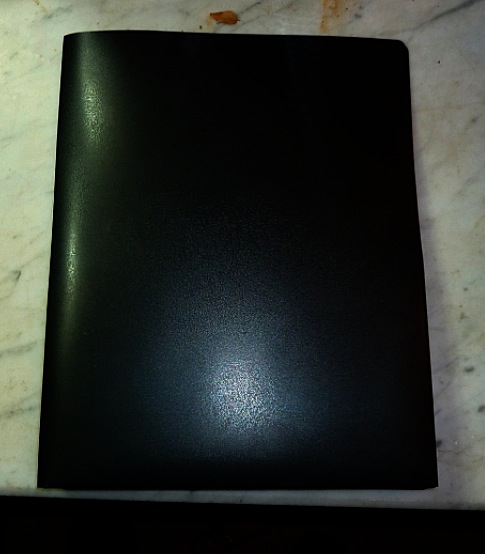





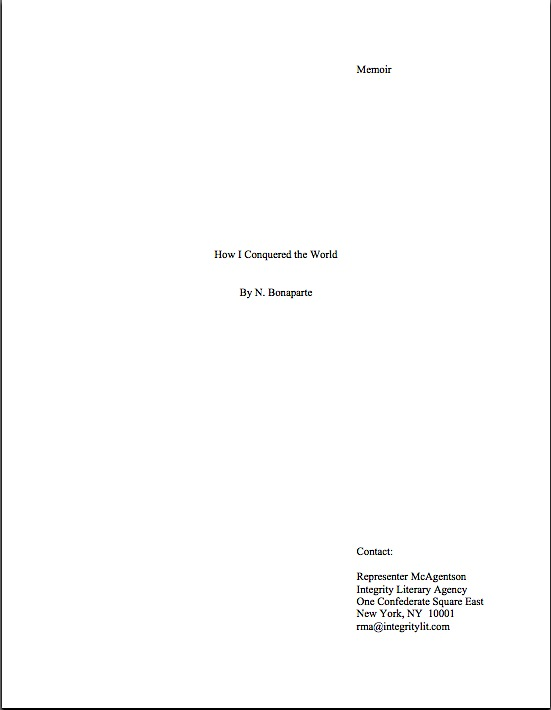
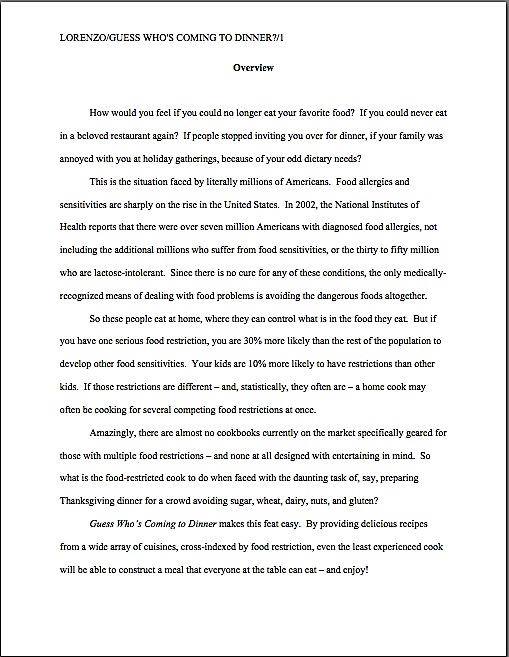
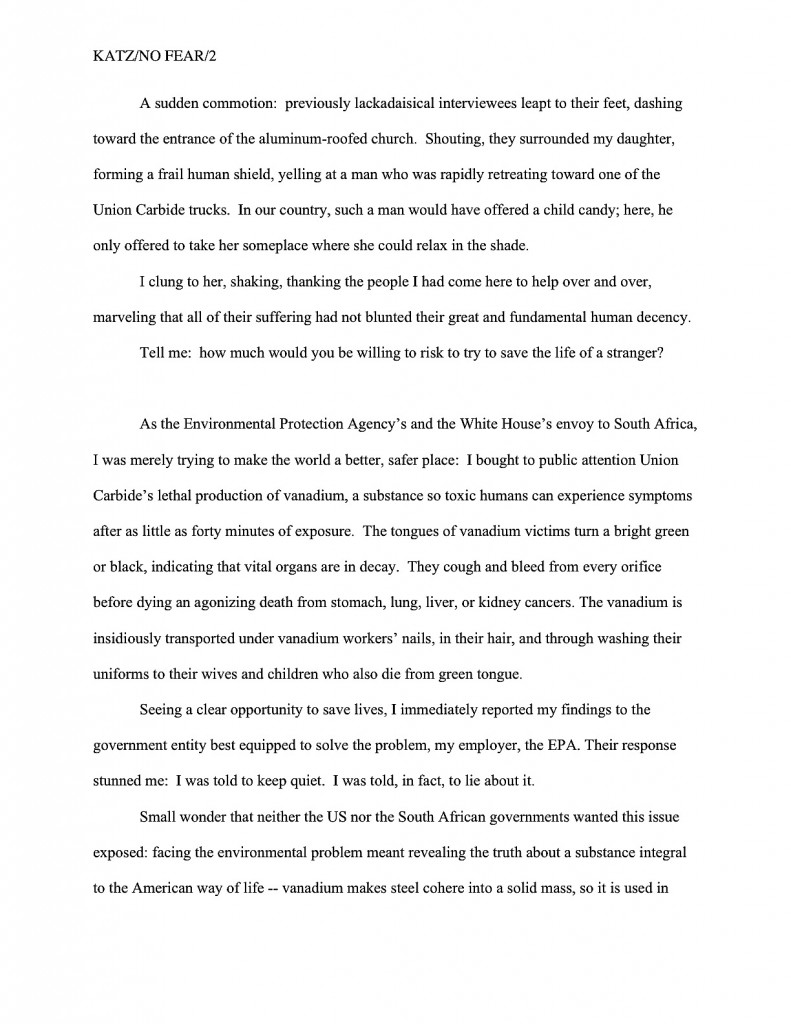
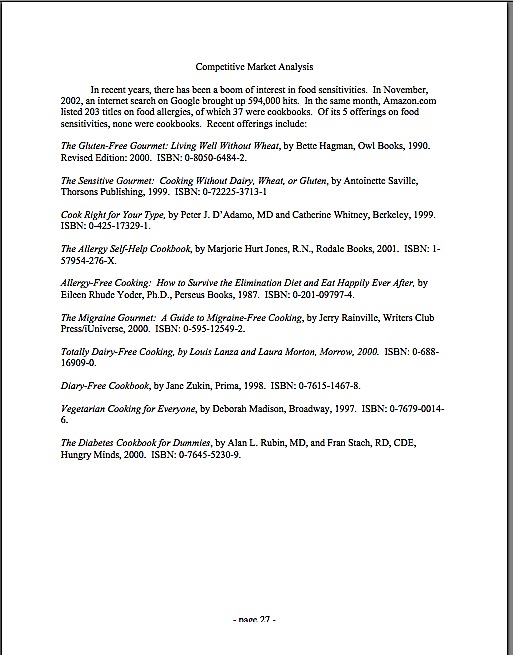



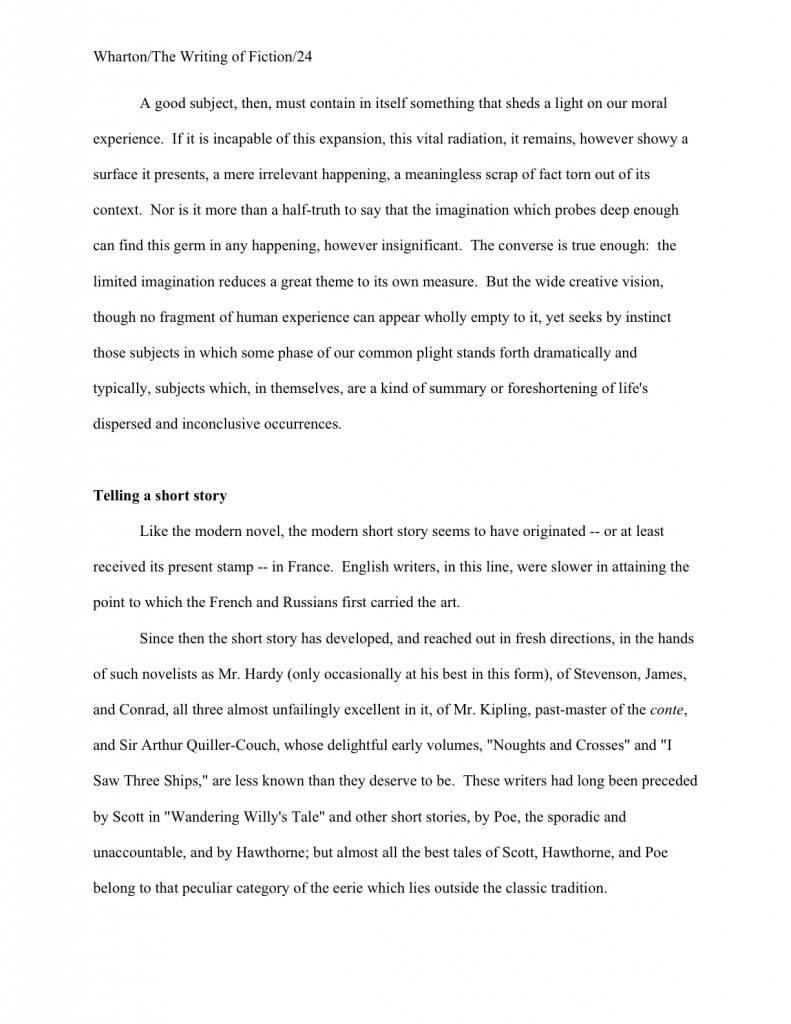
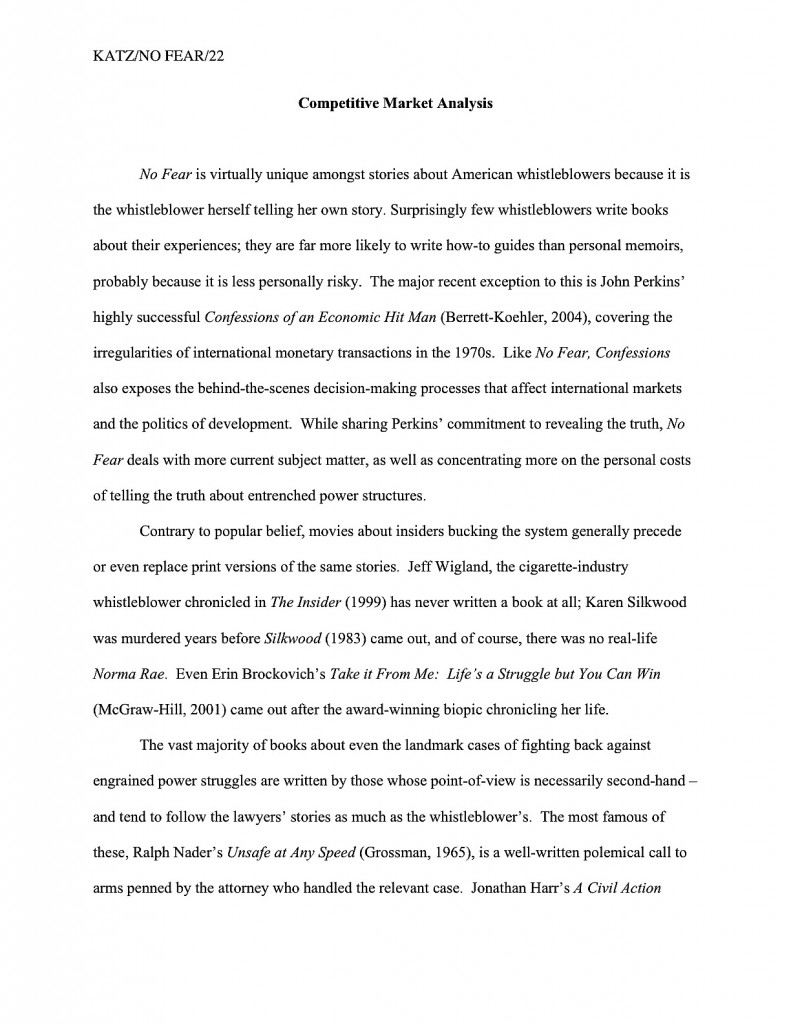





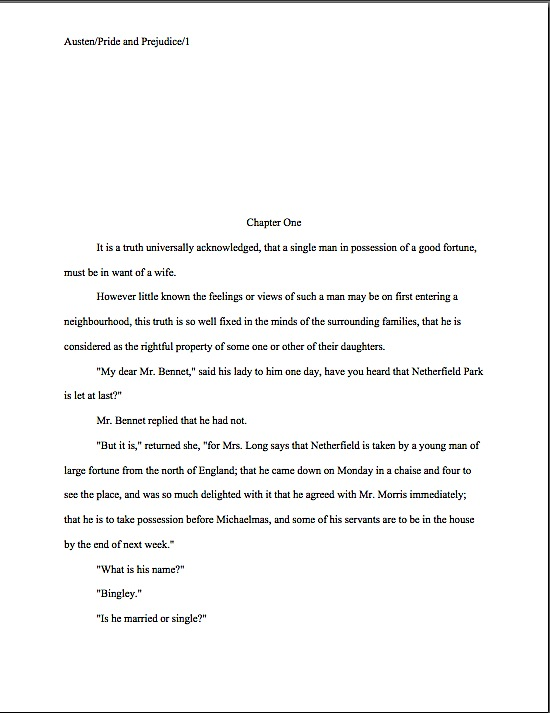



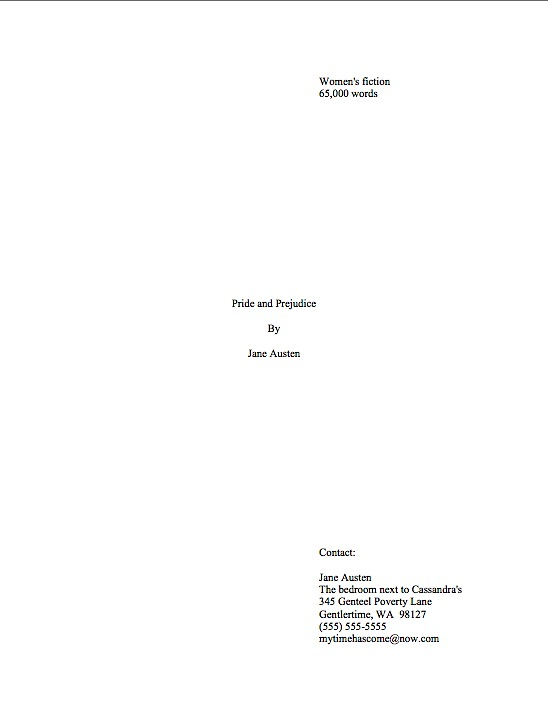







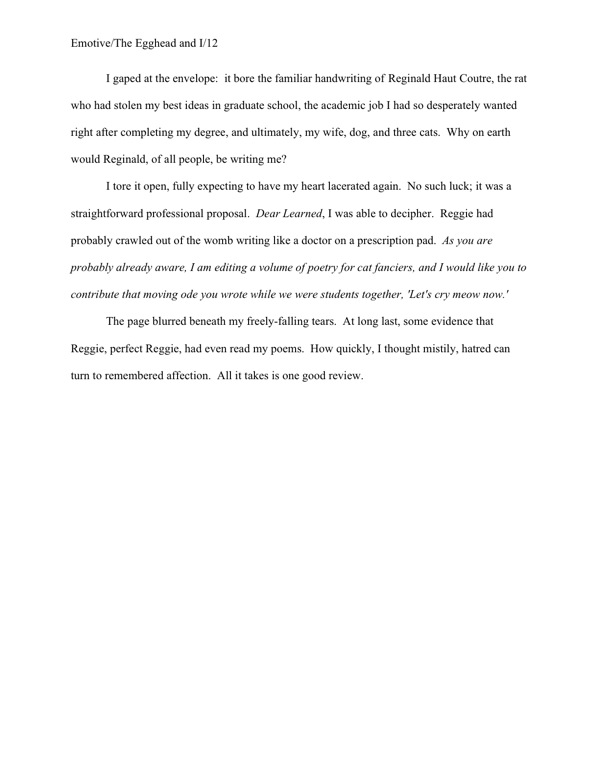

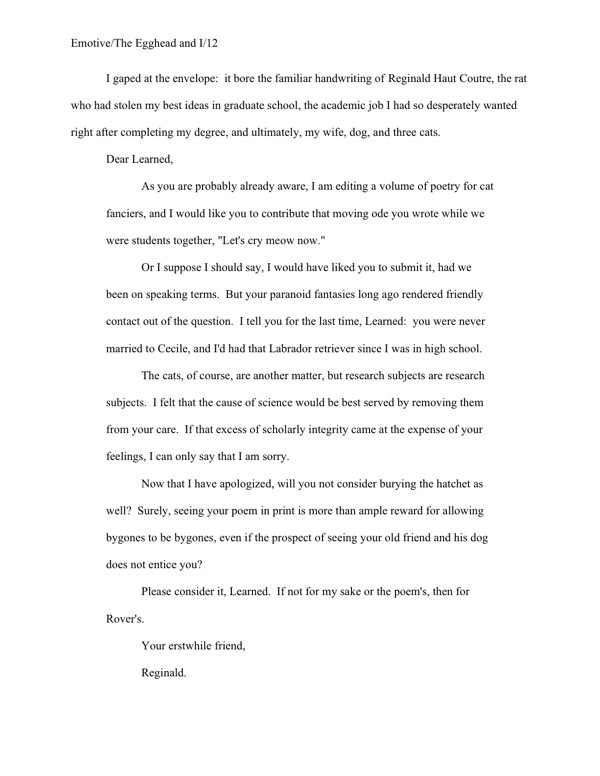
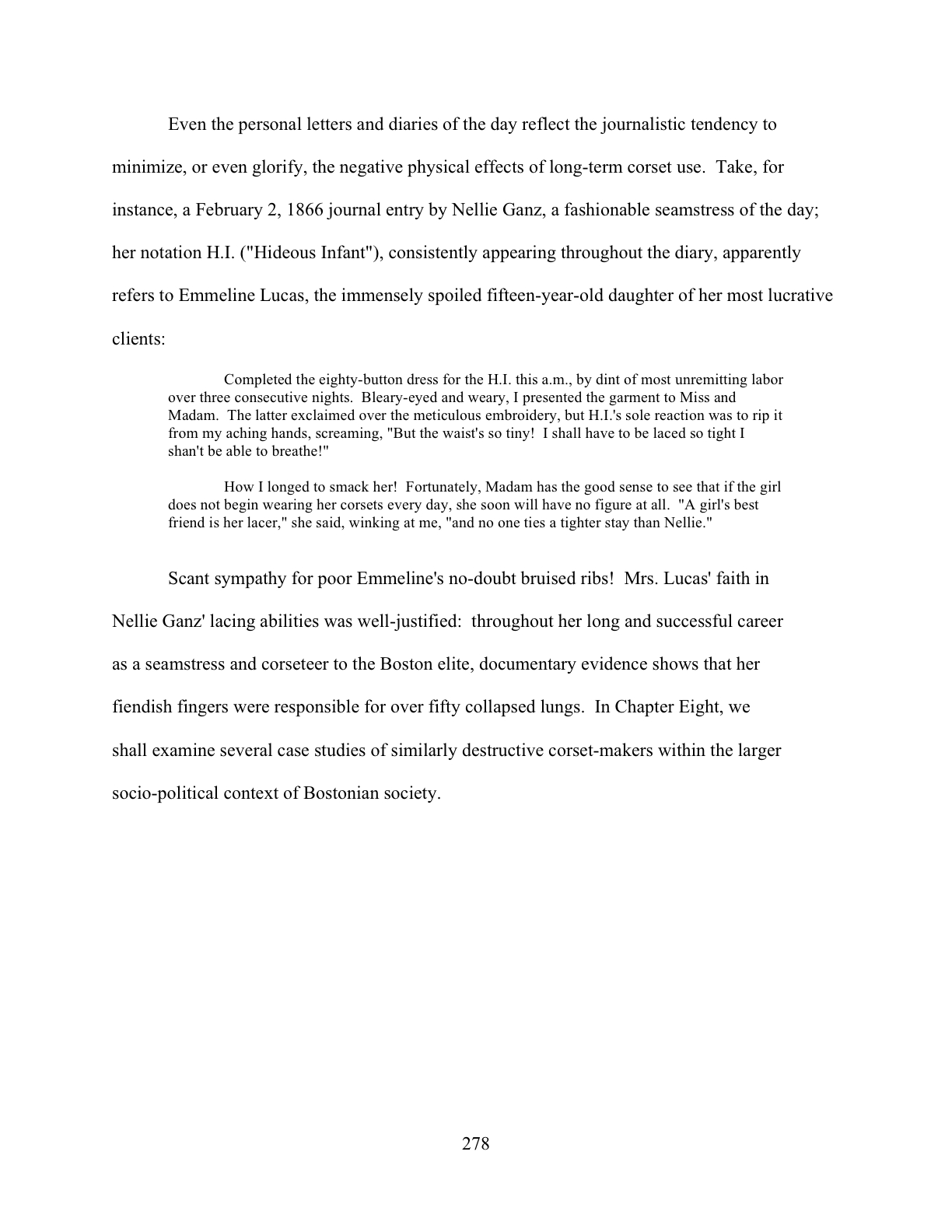
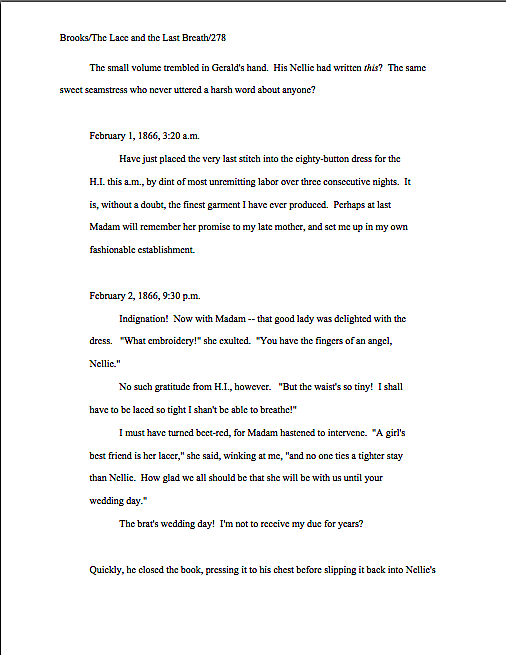








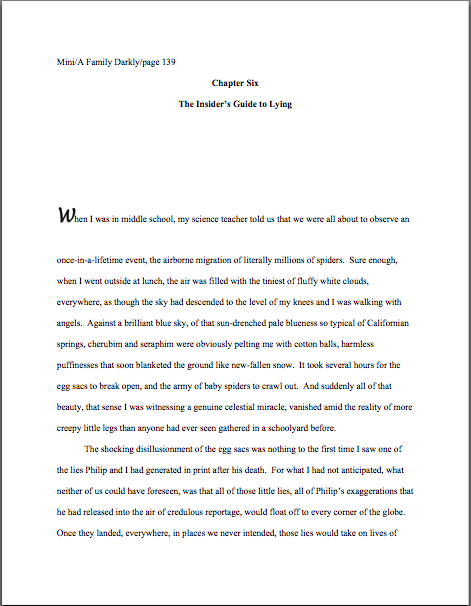



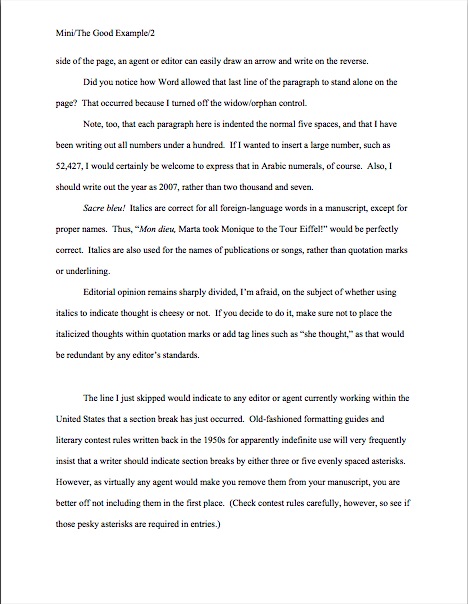




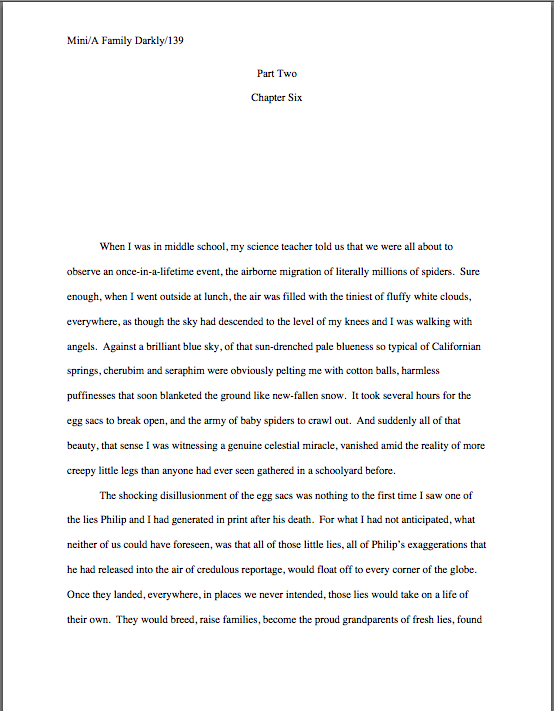
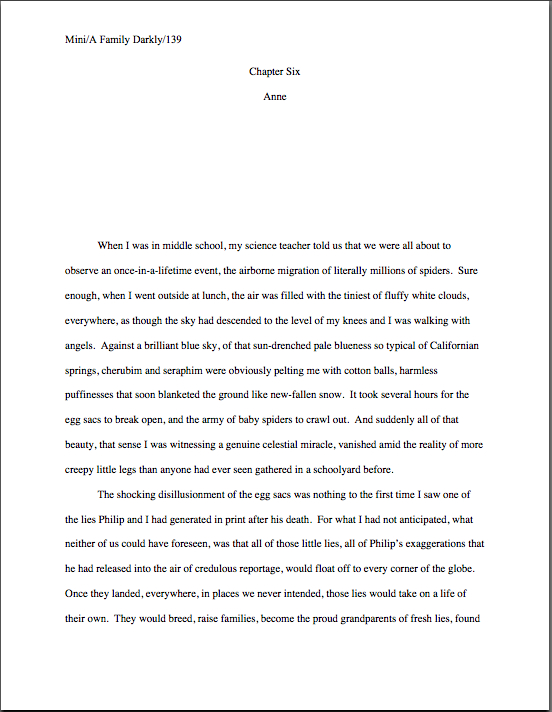





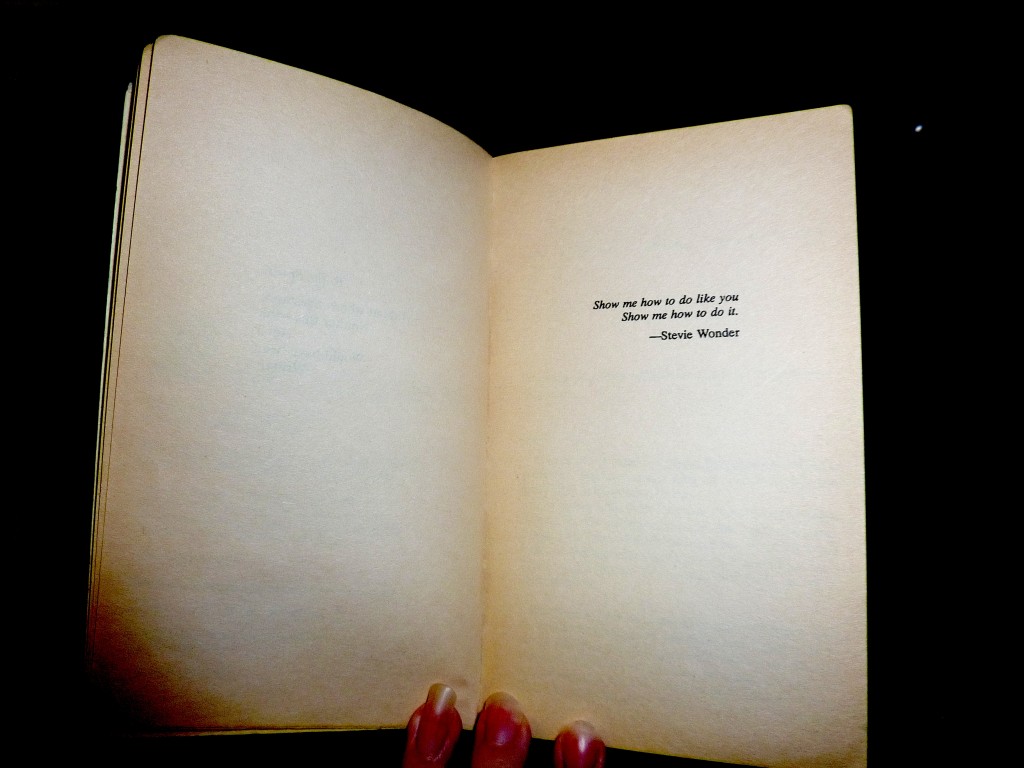







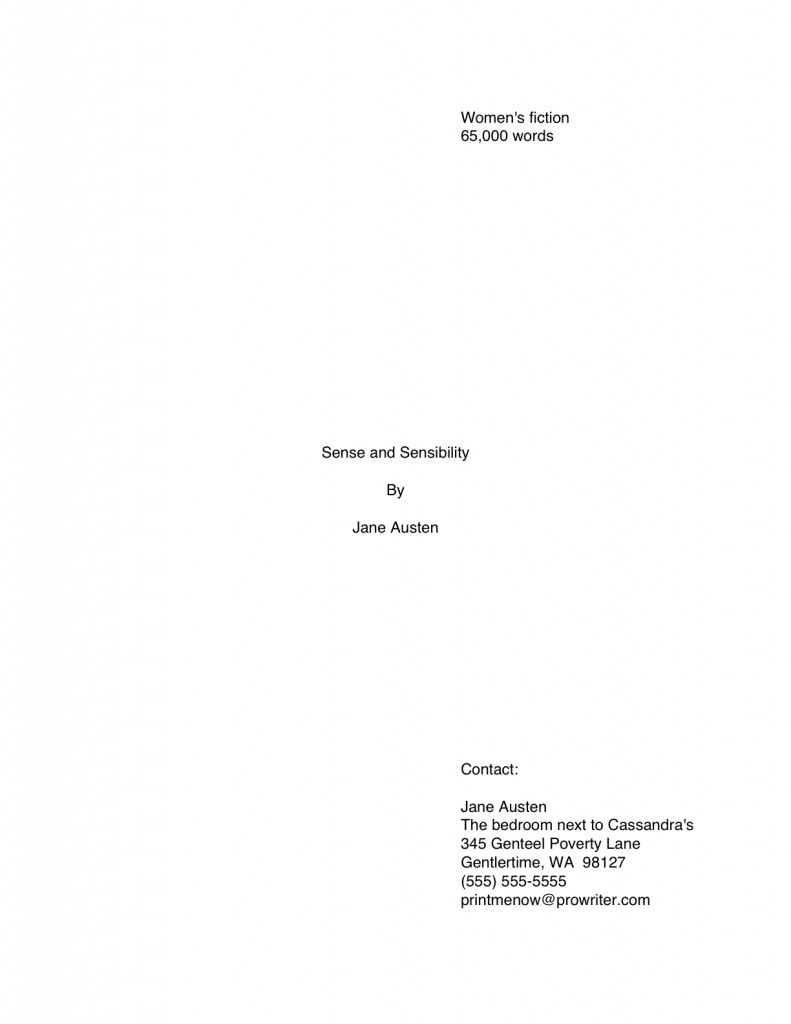
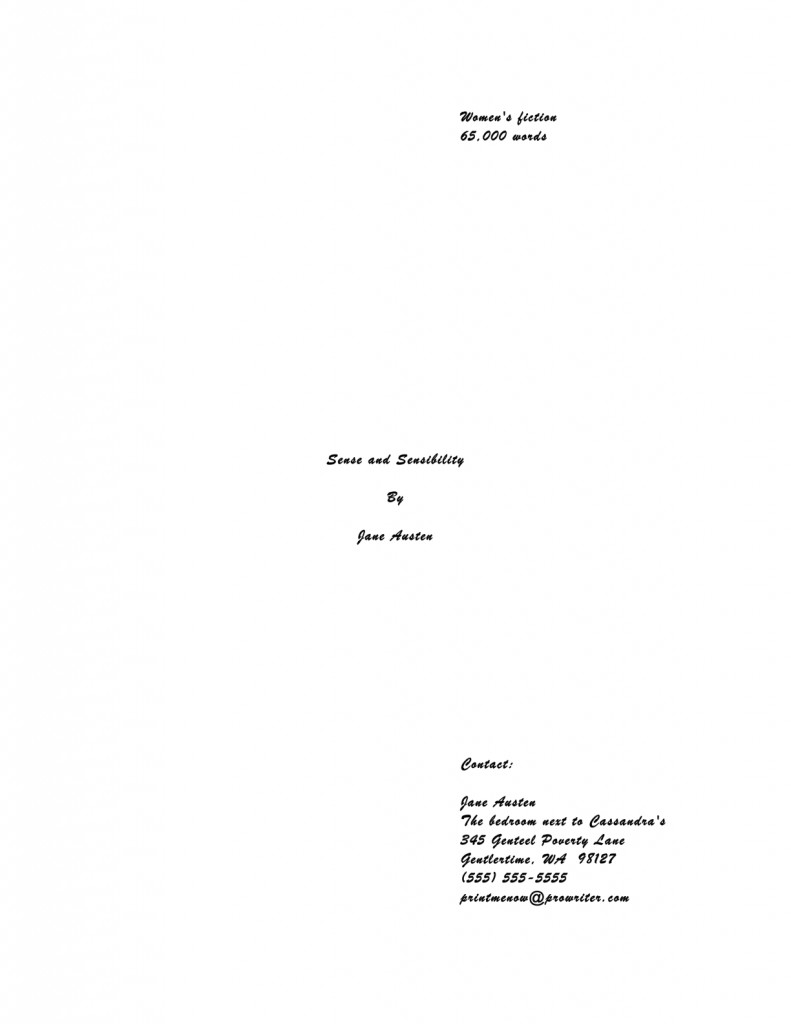

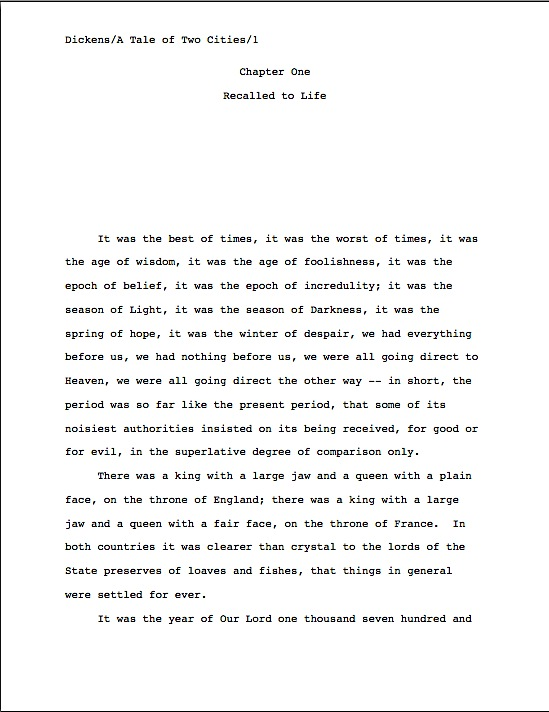


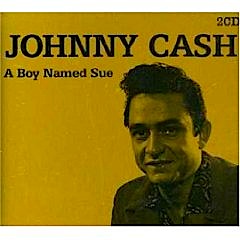





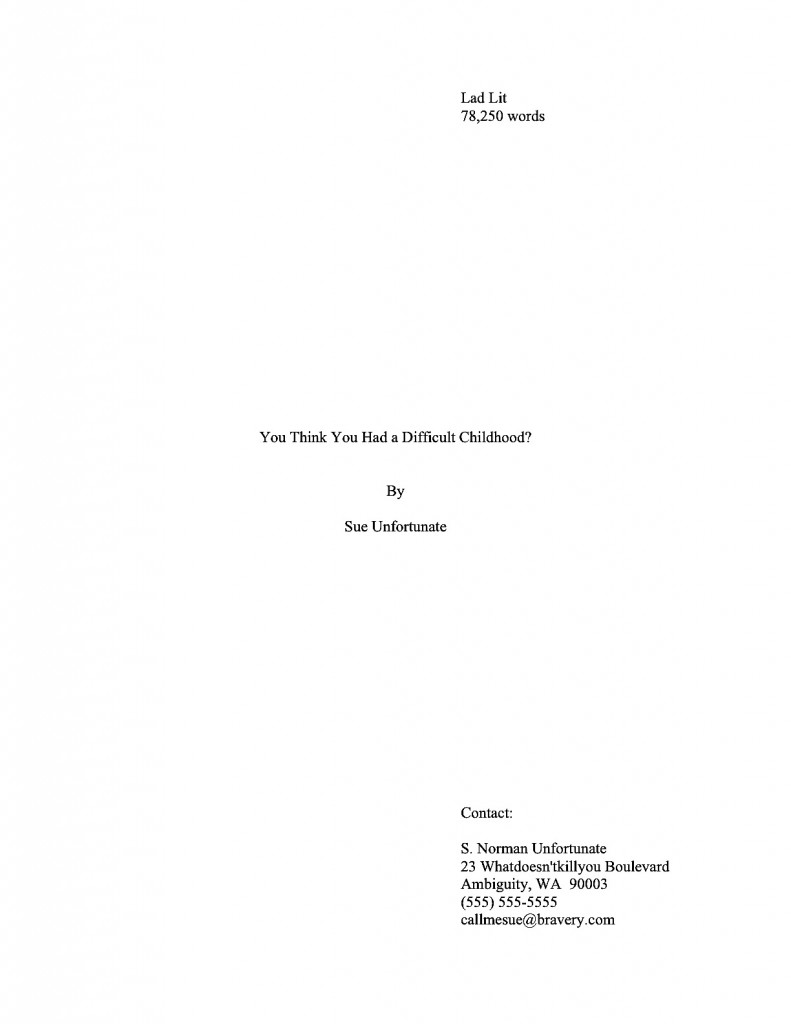

 Please recognize that not everything that falls under the general rubric writing should be formatted identically. Book manuscripts should be formatted one way, short stories (to use the most commonly-encountered other set of rules) another.
Please recognize that not everything that falls under the general rubric writing should be formatted identically. Book manuscripts should be formatted one way, short stories (to use the most commonly-encountered other set of rules) another. 




